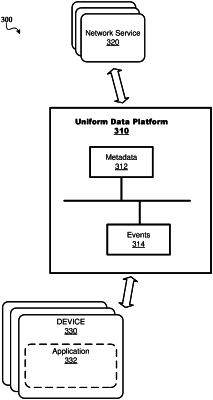| CPC A63F 13/73 (2014.09) [A63F 13/35 (2014.09); A63F 13/58 (2014.09)] | 22 Claims |

|
1. A computer-implemented method for cross-platform consumption of in-game objects, the method comprising:
receiving, by a data platform, from at least one first device, game object data discovered by a user while playing a video game associated with the data platform, the game object data being indicative of which in-game objects have been discovered by the user, the data platform having a data model being uniform across a plurality of application data structures;
attributing, by the data platform, a cross-platform identifier to the game object data, the cross-platform identifier being associated with the user;
storing, by the data platform, metadata associated with the game object data to a database associated with the data platform, the metadata indicative that the user has discovered one or more game objects;
receiving, by the data platform from a second device associated with the data platform, a request for access to the game object data and the metadata, the request including the cross-platform identifier;
authenticating, by the data platform, the request based on the cross-platform identifier;
based on the authentication, selectively providing, by the data platform, access to game object data and the metadata, wherein the game object data may be consumed in an out-of-game environment; and
generating and displaying, by the data platform, a user interface based on the game object data and the metadata, the user interface being customized based on which in-game objects the user has discovered.
|